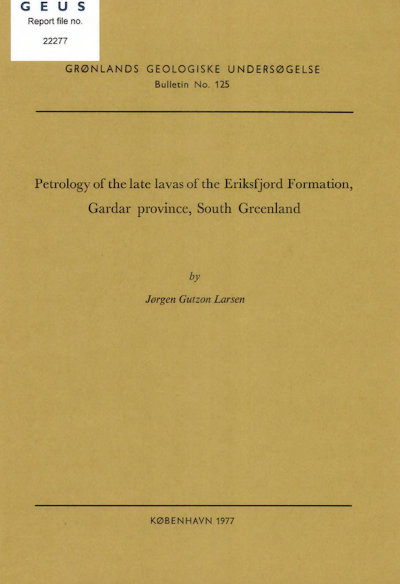Petrology of the late lavas of the Eriksfjord Formation, Gardar province, South Greenland
DOI:
https://doi.org/10.34194/bullggu.v125.6667Abstract
The uppermost 740-1300 m of the c. 3500 m thick Precambrian Eriksfjord Formation in South Greenland are composed of plagioclase- and olivine-porphyritic basalts and hawaiites of a transitional alkaline type, slightly nepheline-normative trachybasalts, trachyandesites and trachytes and a few flows of phonolite. One ultramafic lava also occurs. Evidence for acid volcanism is restricted to a single small occurrence. The rocks show varying degrees of contact metamorphism and hydrothermal alteration caused by the later Gardar intrusions. Major and trace elements show that fractional crystallization of plagioclase and olivine and minor amounts of clinopyroxene, hypersthene (?) and Fe-Ti oxides possibly governed the differentiation in the basic rocks at elevated pressures. The salic lavas belong to several lineages representing a large range in Na2O/K2O ratios. The covariance of the less mobile trace elements Zr, Nb, Y and Nd suggest that they are not derived from magmas represented by the basalts, but they may have been formed by differentiation of another type of basaltic magma.
Downloads
Published
Issue
Section
License
This article is distributed under a CC-BY 4.0 licence, permitting free redistribution and reproduction for any purpose, even commercial, provided proper citation of the original work. Author(s) retain copyright over the article contents.


